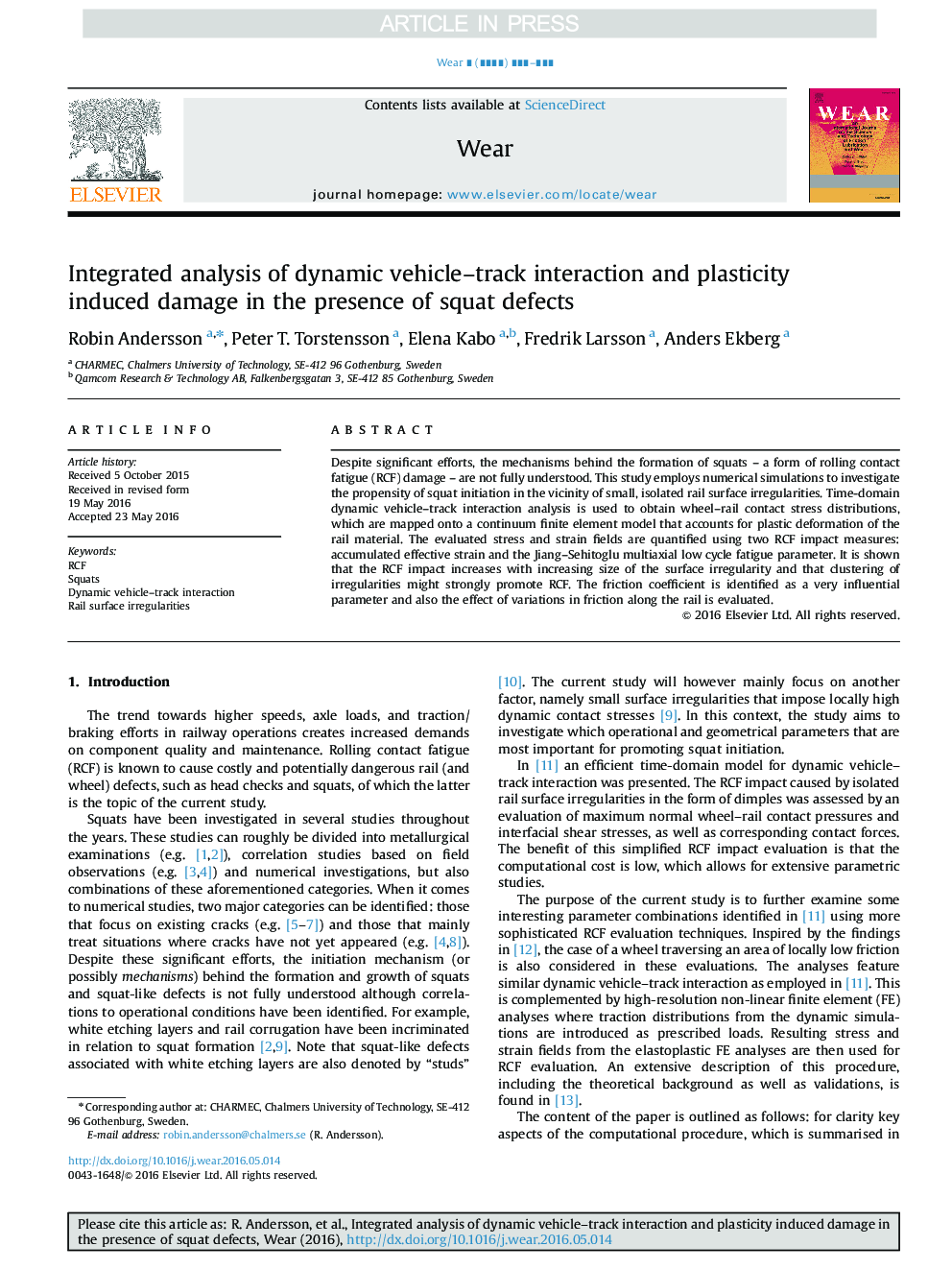| Article ID | Journal | Published Year | Pages | File Type |
|---|---|---|---|---|
| 4986837 | Wear | 2016 | 7 Pages |
Abstract
Despite significant efforts, the mechanisms behind the formation of squats - a form of rolling contact fatigue (RCF) damage - are not fully understood. This study employs numerical simulations to investigate the propensity of squat initiation in the vicinity of small, isolated rail surface irregularities. Time-domain dynamic vehicle-track interaction analysis is used to obtain wheel-rail contact stress distributions, which are mapped onto a continuum finite element model that accounts for plastic deformation of the rail material. The evaluated stress and strain fields are quantified using two RCF impact measures: accumulated effective strain and the Jiang-Sehitoglu multiaxial low cycle fatigue parameter. It is shown that the RCF impact increases with increasing size of the surface irregularity and that clustering of irregularities might strongly promote RCF. The friction coefficient is identified as a very influential parameter and also the effect of variations in friction along the rail is evaluated.
Related Topics
Physical Sciences and Engineering
Chemical Engineering
Colloid and Surface Chemistry
Authors
Robin Andersson, Peter T. Torstensson, Elena Kabo, Fredrik Larsson, Anders Ekberg,
